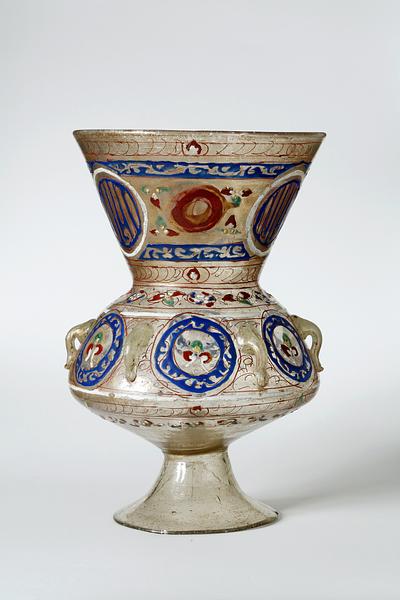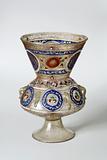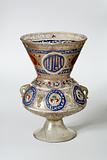Mosque lamp, colorless glass decorated with polychrome enamels and gilding
Egypt or Syria; 14th century
H: 26 cm
Islamic glass lamps had found their characteristic, elegant form in the 13th century: an almost spherical body with a flared neck and a foot that varied in height. It could stand or hang in chains attached to eyes on the body. Undecorated, so that the flame could burn brightly, these lamps were used for secular rooms.
The decoration of this lamp was made fairly quickly. The red circles are the only part of the decoration that was painted on the inside. Between them are thin, white roundels containing a script-like design. The Mamluks’ emblems consisted especially of symbols, but in some cases script was also found, and the roundels here imitate it.
Inv. no. 31/2008
Published in:
Carl Johan Lamm: Mittelalterliche Gläser und Steinschnittarbeiten aus dem Nahen Osten, Berlin 1930, pl. 194:6;
Christie's, Paris, 4-5/3-2008, lot 49;
Phoenix Ancient Art: Crystal, 2.ed., Geneva 2008, cat.no. 14, pp. 76-81;
Yuka Kadoi: “From China to Denmark: a “Mosque lamp” in context” in Journal of the David Collection, 4, 2014, p. 207, fig. 5;



